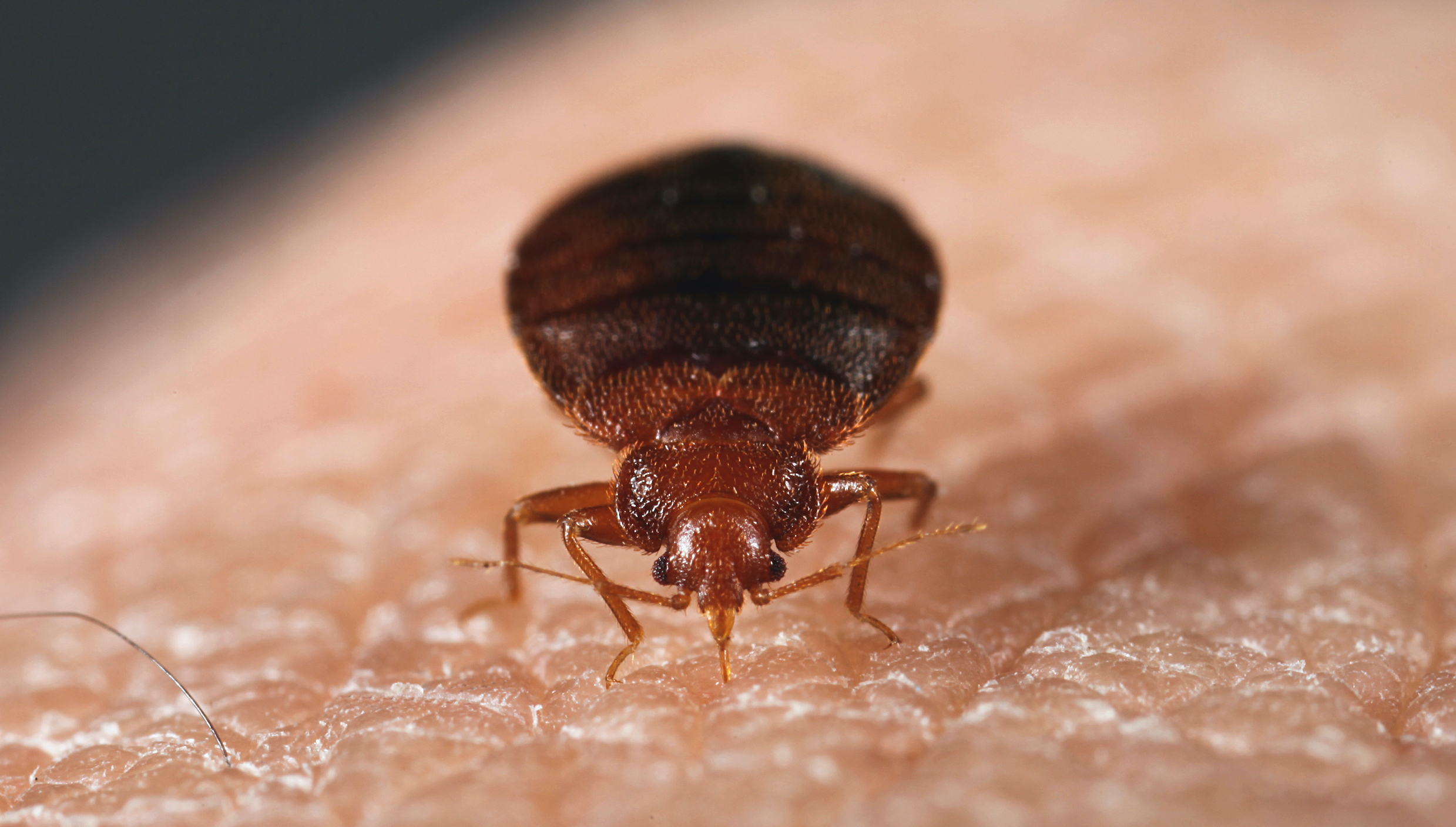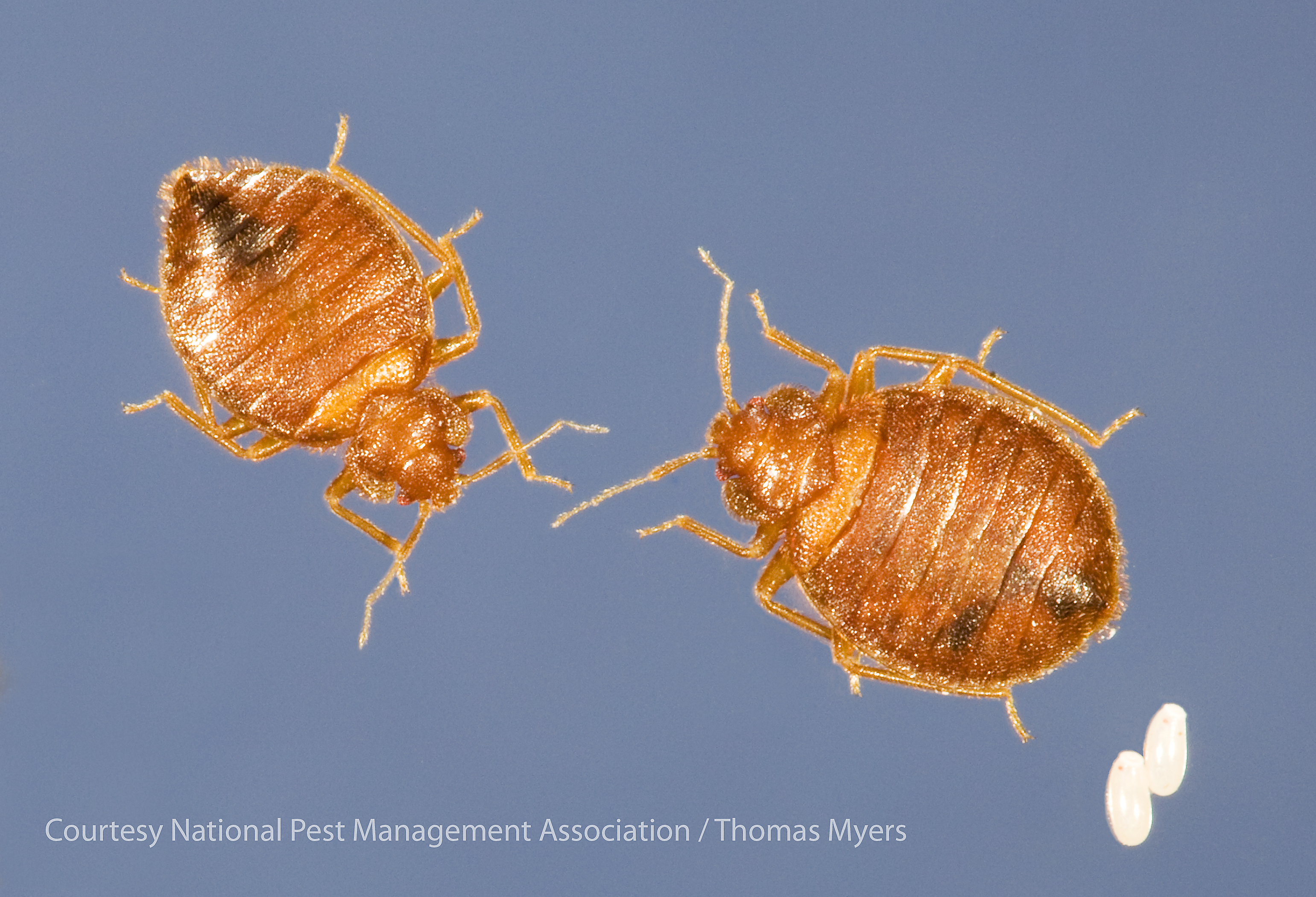Bed Bug Identification & Biology Guide
Think you have a bed bug infestation but not entirely sure? Our bed bug identification chart below can guide you in determining if you have bed bugs, as well as help you find a reliable exterminator.
Bed Bug Identification Guide
Common Name: Bed bug
Scientific Family: Climex lectularius Linnaeus

Bed Bug Color
Unfed adult bed bugs are mahogany to rusty brown color. Engorged bed bugs are red-brown color after a blood meal. Nymphs (baby bed bugs) are nearly colorless when they first hatch and become brownish as they mature.
Bed Bug Shape
Unfed bed bugs are flat and broad-oval. Fed bed bugs become swollen and more elongated.
Bed Bug Size
Adult bed bugs can reach a size of about 1/4 inch long. Nymphs range from 1.3 mm to 4-5 mm.

Bed Bug Lifecycle
Bed bug biology naturally promotes infestation. Female bed bugs lay one to five eggs per day, or an average of 540 eggs in a lifetime. They typically lay their eggs in cracks or rough surfaces. Bed bug nymphs grow to full adulthood in about 21 days and go through five stages of development before they reach maturity. A bed bug will molt once during each stage of development, though a blood meal is required for a molt. An adult bed bug can live for several months without a blood meal.
Watch this video on the bed bug lifecycle.

Bed Bug Feeding
Bed bugs are attracted to the carbon dioxide emitted by their hosts. For this reason, they tend to feed at night on bare skin that is exposed while sleeping. However, they are opportunistic insects and will consume a blood meal during the day, especially in heavily-infested areas. Although bed bugs prefer to feed on humans, they will feed on other warm-blooded hosts as well.

Bed bugs usually require 5-10 minutes to engorge with blood. They feed by inserting two hollow, beak-like feeding tubes into their host. The first tube injects the bug's saliva, which contains anesthetics to numb the feeding area. The second tube draws blood. After feeding, they move to secluded places and hide for 5-10 days. During this time, they do not feed but instead digest their meal, mate and lay eggs.
Have More Questions About Bed Bug Identification & Biology?
Get answers to other questions about bed bugs by contacting an exterminator near you today.




